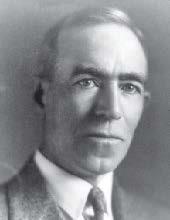
January 31st, 2023 | 8:30 am to 12:00 pm
Charleston Town Center Marriott, Charleston, WV
The 36th Annual AB Brooks Memorial Forestry Symposium will be held on Jan 31st from 8:30 am to 12:30 pm at the Marriott Charleston Town Center Hotel in Charleston, WV. Registrants will receive CFE credit through the Society of American Foresters (SAF).
Full registration includes; “Taste of West Virginia” Banquet Jan 30th at the Marriott
Register for SAF CFE credits by emailing kayla@wvfa.org .
Registration will close on Monday, January 23rd.
Overnight room reservations can be made by calling the Charleston Marriott Town Center at (304) 345-6500. Identify the West Virginia Forestry Association to obtain the $109.00 room rate.
Detailed Agenda
7:00-8:15 AM – Breakfast
8:30 – Welcome & Opening Remarks –WVFA President Aaron Plaugher and Executive Director Eric Carlson
8:40 – Blue Source Forests – Anew’s Investment in West Virginia – Cakey Worthington and Blake Stansell Blue Source Forests LLC
9:15 – West Virginia University School, of Forest Resources – Looking Ahead Dr Darrell Donahue Dean, Davis College of Agriculture and Natural Resources
10:00 – Break (15 minutes)
10:15 – Cross Laminated Hardwood Timber – New Developments – Dr Levente Denes , Associate Professor of Sustainable Biomaterials , WVU School of Forest Resources
11:00 – New Opportunities in Workforce Development – Jennifer Grimes , Randolph County Housing Authority and Gabrielle Dean , Glenville State University
11:40 – Monongahela National Forest Update Shawn Cochran Forest Supervisor Monongahela National Forest
12:00 – Adjourn & Lunch
AB Brooks History
The annual A. B. Brooks Memorial Forestry Symposium was inaugurated in 1986 to honor and commemorate West Virginia’s first and most illustrious forester. His full name was Alonzo Beecher Brooks, although he was simply “A. B.” to friends and acquaintances. He was born May 6, 1873. The Brooks family lived near French Creek, Upshur County, West Virginia, on a typical West Virginia hill farm. There was no money for college; so A. B. taught himself plane surveying and began the preparation of a map that included every road and every dwelling (outside the corporate limits of Buckhannon) in Upshur County.
In 1905, the map was completed, and sales provided funds for his entrance to West Virginia University. Since there were few public high schools, A. B. spent two years in college preparation courses, then began a baccalaureate program (1908) which included the first forestry courses ever offered at the University. He was a member of the first graduating class that had instruction in forestry.
He then accepted an appointment as the forester for the West Virginia Geological Survey (1910-1911) to collect data for, and to prepare a survey of West Virginia’s forest resources, county by county. This detailed study resulted in a book of 486 pages and was published as Forestry and Wood Industries, Volume 5 of the West Virginia Geological and Economic Survey, in 1911. It is the classic on the State’s early forest conditions and resources.
- B. later served as forester for the West Virginia Agricultural Experiment Station, where he worked on a program concerned with stopping the spread of chestnut blight. From West Virginia, he moved to the state of New York and spent two years in its Conservation Department. After this, he returned to West Virginia where he soon published a 242- page book (West Virginia Trees). This book included identification data, descriptions, ranges and a detailed drawing of every tree species known to occur within the State. Originally published by West Virginia University in 1920, it was reprinted in 1951 and republished in 1972.
In 1921, West Virginia’s first Conservation Commission was established, and A. B. became its first Director with the title of Chief Game Protector. Under his administration, the first State forest (Seneca) and the first State park (Watoga) were established.
When Colonel E. W. Oglebay left his 700- acre Waddington Farms to the city of Wheeling, a recreational and educational program of music, nature study, handicrafts, horticulture, and other cultural activities was instituted. A. B. became Oglebay Institute’s first Staff Naturalist. His Sunday morning bird walks along Oglebay’s trails gradually developed into the internationally famous Brooks Bird Club.
Registraion Form
Powered by Wild Apricot Membership Software
